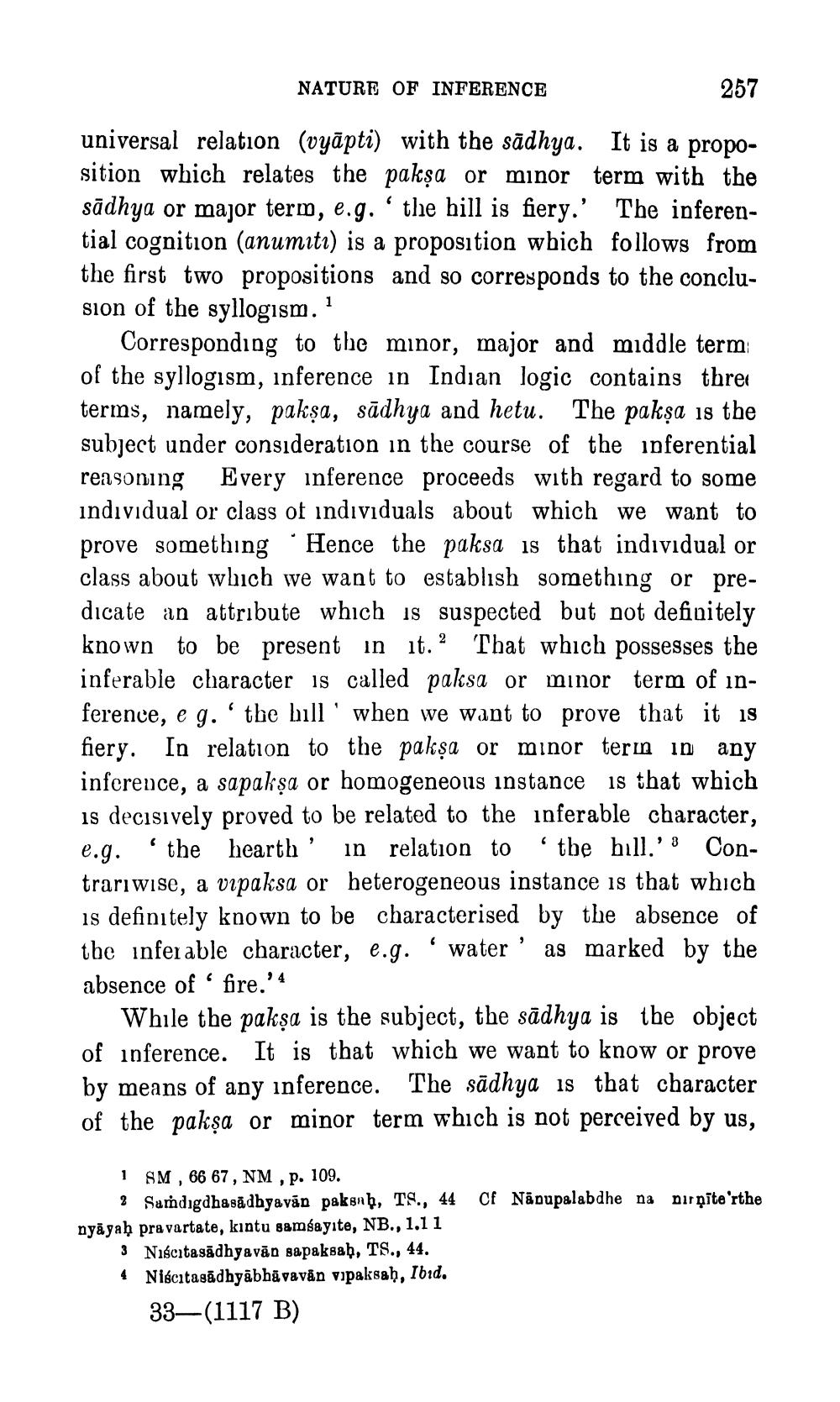________________
NATURE OF INFERENCE
257
universal relation (vyāpti) with the sādhya. It is a proposition which relates the pakṣa or minor term with the sādhya or major term, e.g. the hill is fiery.' The inferential cognition (anumiti) is a proposition which follows from the first two propositions and so corresponds to the conclusion of the syllogism.'
Corresponding to the minor, major and middle term of the syllogism, inference in Indian logic contains three terms, namely, paksa, sādhya and hetu. The paksa is the subject under consideration in the course of the inferential reasoning Every inference proceeds with regard to some individual or class of individuals about which we want to prove something 'Hence the paksa is that individual or class about which we want to establish something or predicate an attribute which is suspected but not definitely known to be present in it.? That which possesses the inferable character is called paksa or minor term of inference, e g. 'the bill' when we want to prove that it is fiery. In relation to the paksa or minor terin in any inference, a sapakṣa or homogeneous instance is that which is decisively proved to be related to the inferable character, e.g. 'the hearth' in relation to the bill.'s Contrariwise, a vipaksa or heterogeneous instance is that which is definitely known to be characterised by the absence of the infer able character, e.g.' water' as marked by the absence of 'fire.'4
While the paksa is the subject, the sādhya is the object of inference. It is that which we want to know or prove by means of any inference. The sādhya is that character of the pakṣa or minor term which is not perceived by us,
Cf Näpupalabdhe na nirnīte'rthe
1 SM , 66 67, NM , p. 109.
3 Samdigdhasādbyavān pakan b, Ts., 44 nyāyaḥ pravartate, kintu samsayite, NB., 1.11
3 Nascitasādhyavan sapaksab, TS., 44. 4 Nibcitasādhyābhāvavân vipaksah, Ibid.
33—(1117 B)




